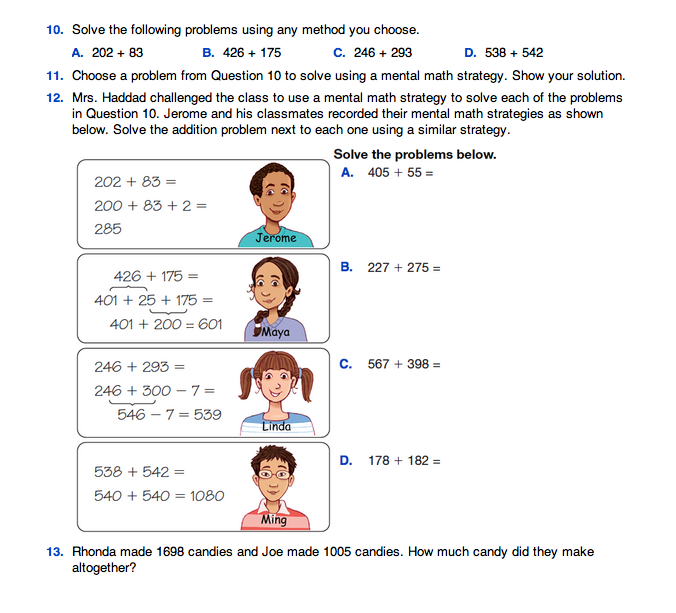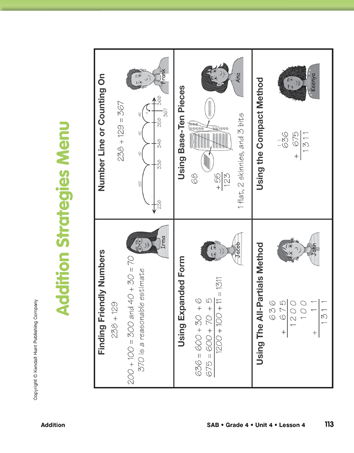Addition
Est. Class Sessions: 2–3Developing the Lesson
Part 3. Choosing Appropriate Strategies
When appropriate, point out that a paper-and-pencil method is often not the quickest, nor most efficient way to solve the problem.
For example, ask:
Discuss strategies with students and encourage them to find different ways of doing the problem. One person might add the 4 to 1876 to get 1880 and then add 2000 to get 3880. Another person might add the 2000 first.
Ask:
Refer students to the Addition Strategies Menu in the Student Activity Book. Ask students to compare the strategies on the menu to the strategies collected, discussed and posted. Check to see if the strategy they just used is on the menu.
Ask:
The Addition Strategies Menu in the Student Activity Book is blank on the back. Students can use the blank side to add their own invented strategy or reference another strategy. Identify a mental math strategy with a cloud or a thought bubble.
Now that students have several addition methods in their collection and the Addition Strategies Menu to summarize those strategies, students should explore which strategies work best in different situations. Ask students to solve the problem in Question 9 using any method they choose. Question 9B describes how Maya started a paper-and-pencil method and how John used a mental math strategy. Students are asked to complete each person's strategy and then choose the strategy they liked best for that problem.
Assign Questions 10 and 11 to give students more experience in choosing from a variety of strategies. Question 11 asks students to choose one problem to solve using a mental math strategy. The problems in Question 10A and 10B are good candidates for a mental math strategy. Encourage students to start asking themselves when a mental strategy seems to be the best strategy.
Question 12 asks students to look at mental math strategies and solve problems using those strategies. Questions 13 and 14 ask students to compare paper-and-pencil solutions to a problem and choose their preferred strategy for that problem.














